
Sorting Blends And Digraphs Worksheets 99Worksheets
Blends and Digraphs Certain consonants blend together and these need to be mastered by children in order to confidently decode words while reading. This set of Blends Activity Sheets includes 12 high quality worksheets which provide the child with opportunities to practise creating common blends. Preschool, prep, grade 1 and 2.
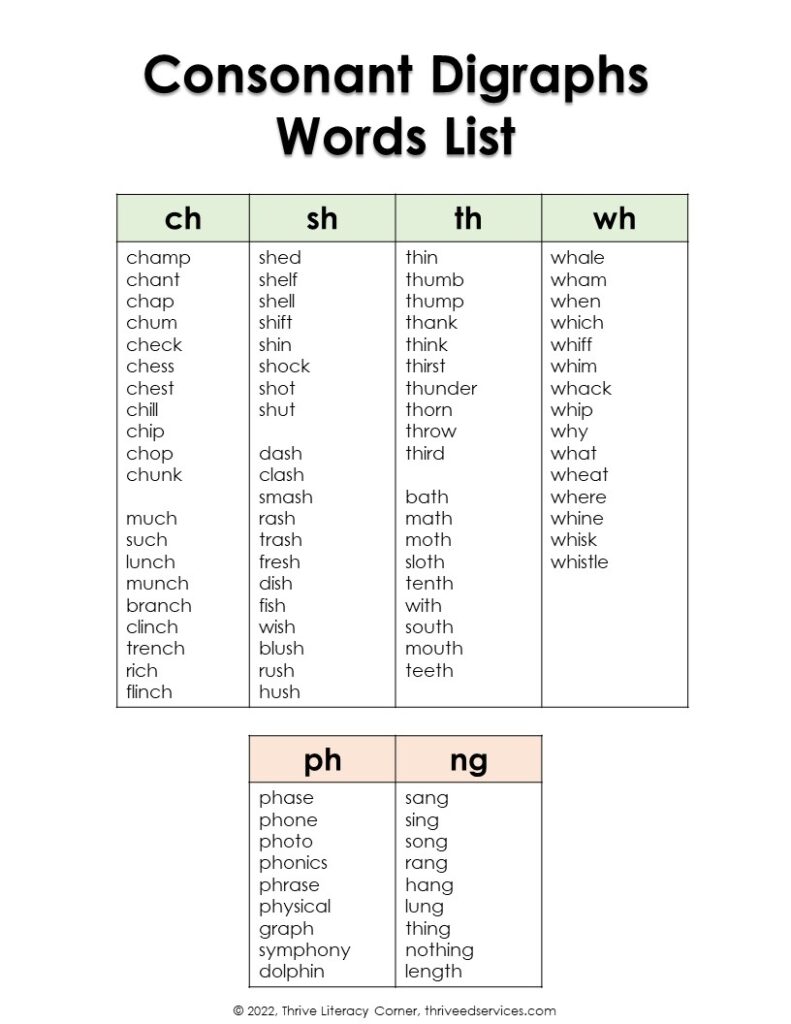
21+ Digraphs Chart Pdf KerrynGrayson
In speech, this is known as an elision. To avoid elision, or the emission of a sound, you must explicitly teach and pay attention to the order of individual sounds in blends, and the letters that represent them. This will help students read and spell blends successfully.
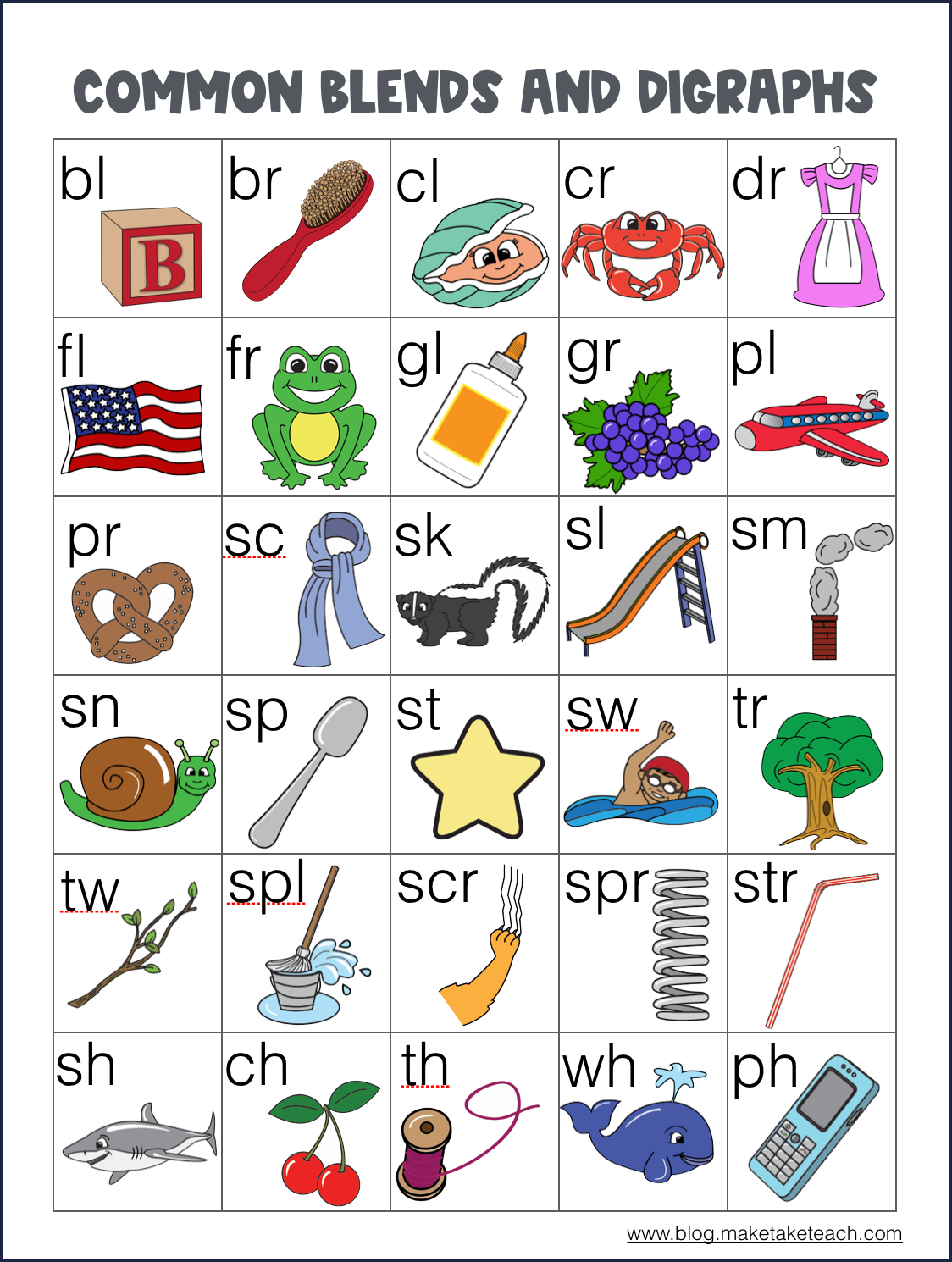
Consonant Blends and Digraphs Game Boards Make Take & Teach
The most common beginning consonant blends include: bl, br, cl, cr, dr, fr, tr, fl, gl, gr, pl, pr, sl, sm, sp and st. Blends can also occur at the end of words as in the word "last". There are also blends which contain three consonants. Common three consonant blends include: str, spl, and spr.

Blends And Digraphs Worksheet
Blends and Digraphs. October 13. One of the primary reasons we teach blends and digraphs is to help students become more fluent readers and writers. When students are able to recognize and decode blends and digraphs, they are better able to read words with accuracy and speed. This, in turn, helps them to comprehend what they are reading more.
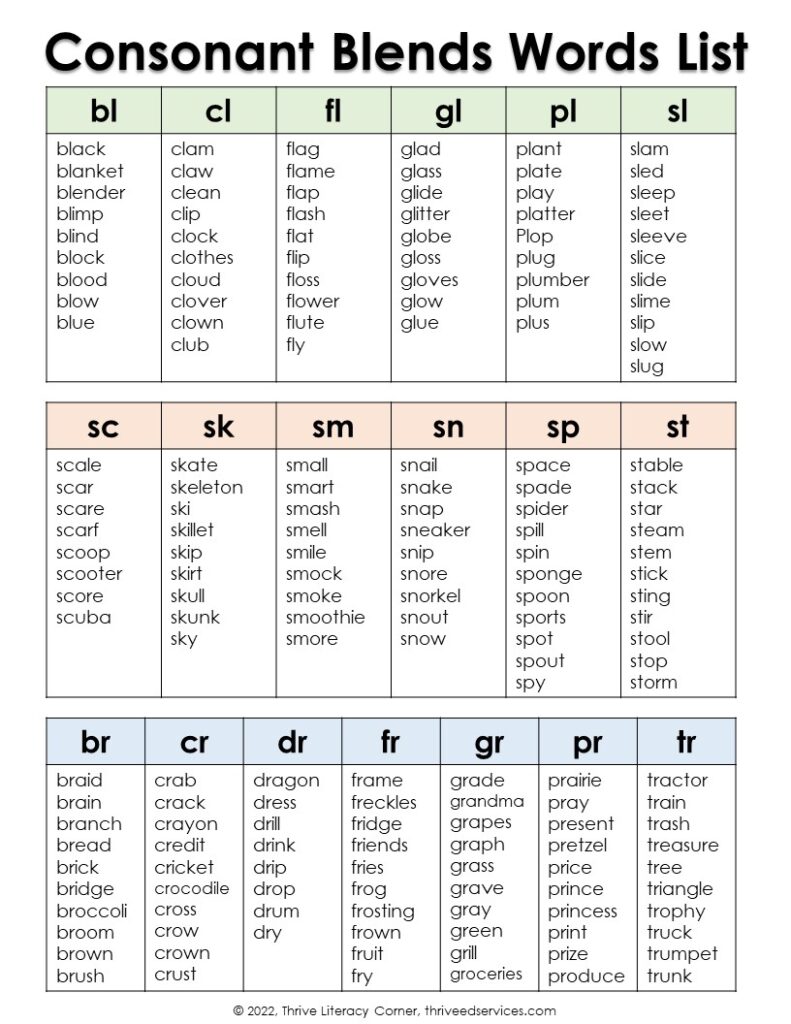
Medial Consonant Blends Word List
What is a Digraph? A digraph is two consonants that come together to make ONE sound. For example, think about the sh in the word sheep. You can hear that sh makes one sound /sh/. There are common digraphs like ch, sh, th, and wh. There are less common digraphs like wr, kn, gn, gh, and ph.
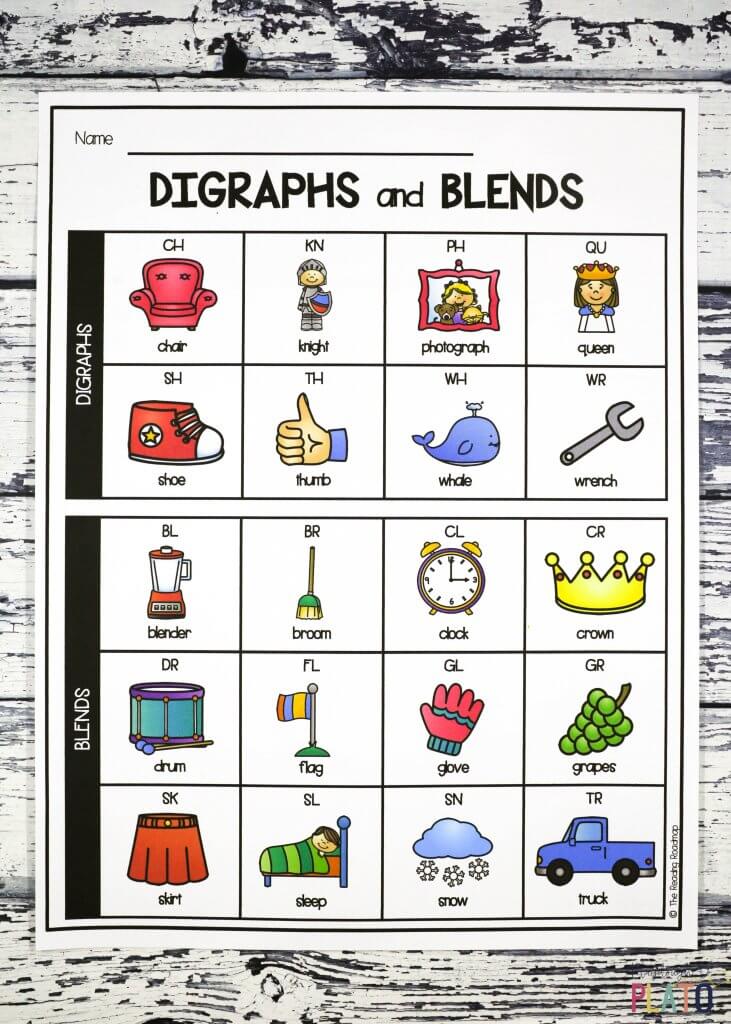
Digraph and Blend Chart Playdough To Plato
A diagraph is a pair of letters that make one sound, but a blend is a pair or group of letters that work together using each of their individual sounds. Children learning to read will benefit from seeing diagraphs and blends and practicing their sounds apart from the words that use them.

Beginning Blends and Digraphs pictio… English ESL worksheets pdf & doc
Learn more digraphs and blends with this phonics digraph song for children. This digraphs video for kids will teach the ir digraph, or digraph, ow digraph, o.

Twinkle Teaches I Graph, You Graph, Digraphs!
A digraph is two letters combined to make a single sound in written or spoken English. The digraph can consist of consonants and vowels. These shouldn't be confused with a blend of two letters in spoken English, where each letter makes a distinct sound rather than combining to make one sound. Examples of consonant digraphs include "ch", "ng.
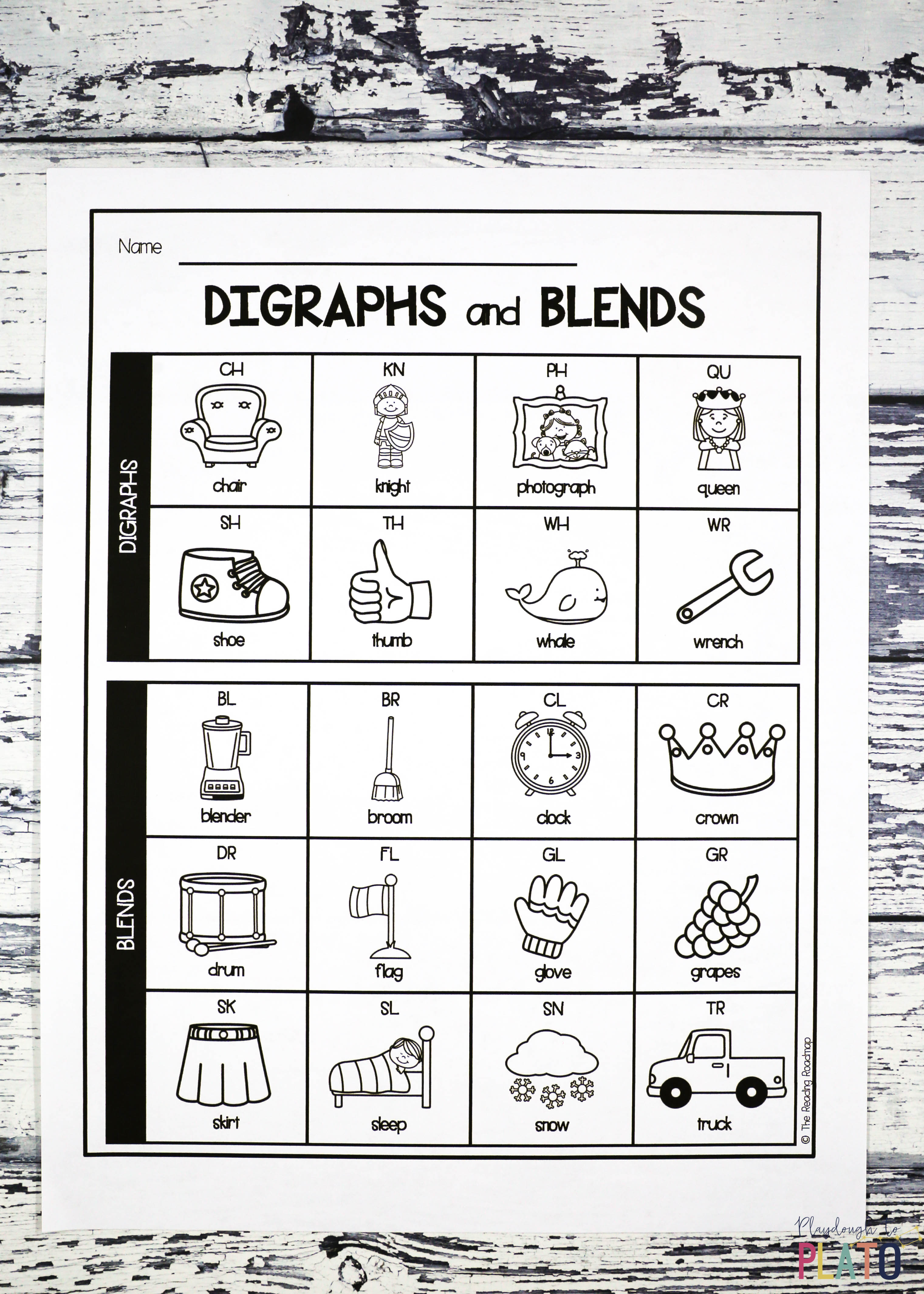
Digraph and Blend Chart Playdough To Plato
1. "What is the difference between blends and digraphs?" A BLEND is when each sound of two or more consonants can be heard as they are blended together. For example, /pl/ as in play. You say (and teach) /pl/ but the /p/ and /l/ can be heard as separate phonemes.
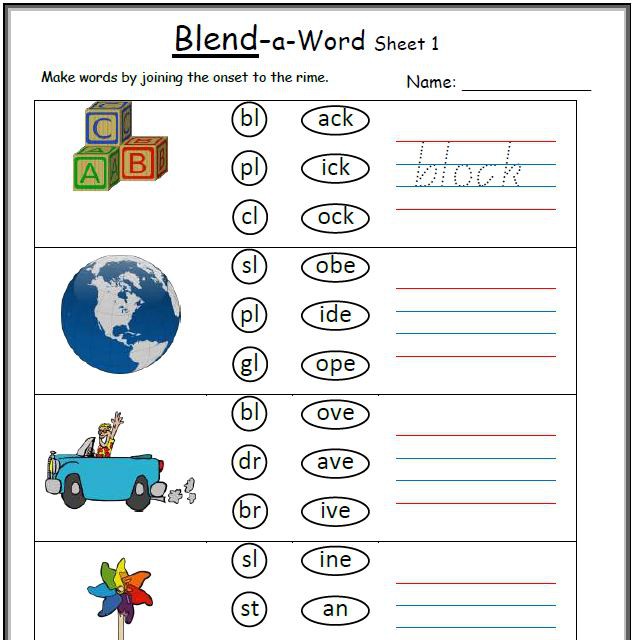
Blending With Digraphs 1 Worksheets 99Worksheets
Digraphs consist of two letters that together represent a single sound (phoneme) that is different from the sound of each letter on its own. These pairs of letters are inseparable in terms of sound within a word. English has both vowel digraphs and consonant digraphs. Examples of Consonant Digraphs:
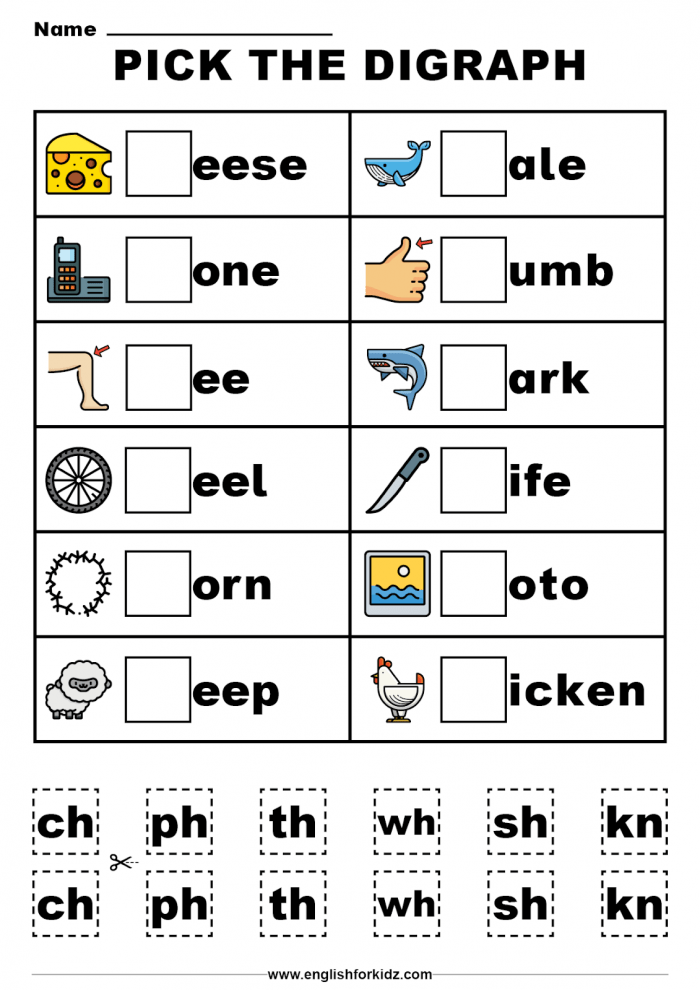
Beginning Blends 1 Worksheets 99Worksheets
Consonant digraphs include: bl, br, ch, ck, cl, cr, dr, fl, fr, gh, gl, gr, ng, ph, pl, pr, qu, sc, sh, sk, sl, sm, sn, sp, st, sw, th, tr, tw, wh, wr. Some trigraphs are: nth, sch, scr, shr, spl, spr, squ, str, thr. There are also digraphs that produce a distinct vowel sound.

Consonant Digraphs Anchor Chart
7.2 Digraphs and trigraphs. 7.2.1 Double consonants. 7.3 Diacritics. 7.4 Upper and lower case. 8 Vocabulary comparison. Toggle Vocabulary comparison subsection. 8.1 Degrees of lexical similarity among the Romance languages. 9 See also. 10 References. Toggle References subsection. 10.1 Bibliography. 11 External links.

The Difference Between Blends and Digraphs This Reading Mama
Click HERE for a FREE digraph resource with activities and worksheets aimed at 1st-2nd graders and upper Kindergarten students. If this works well for you, there is a 329-page bundle for the digraphs ck, kn, ph, wr, sh, ch, wh, th with activities, center activities, and worksheets. The bundle is more than 20% off with a FREE assessment pack.
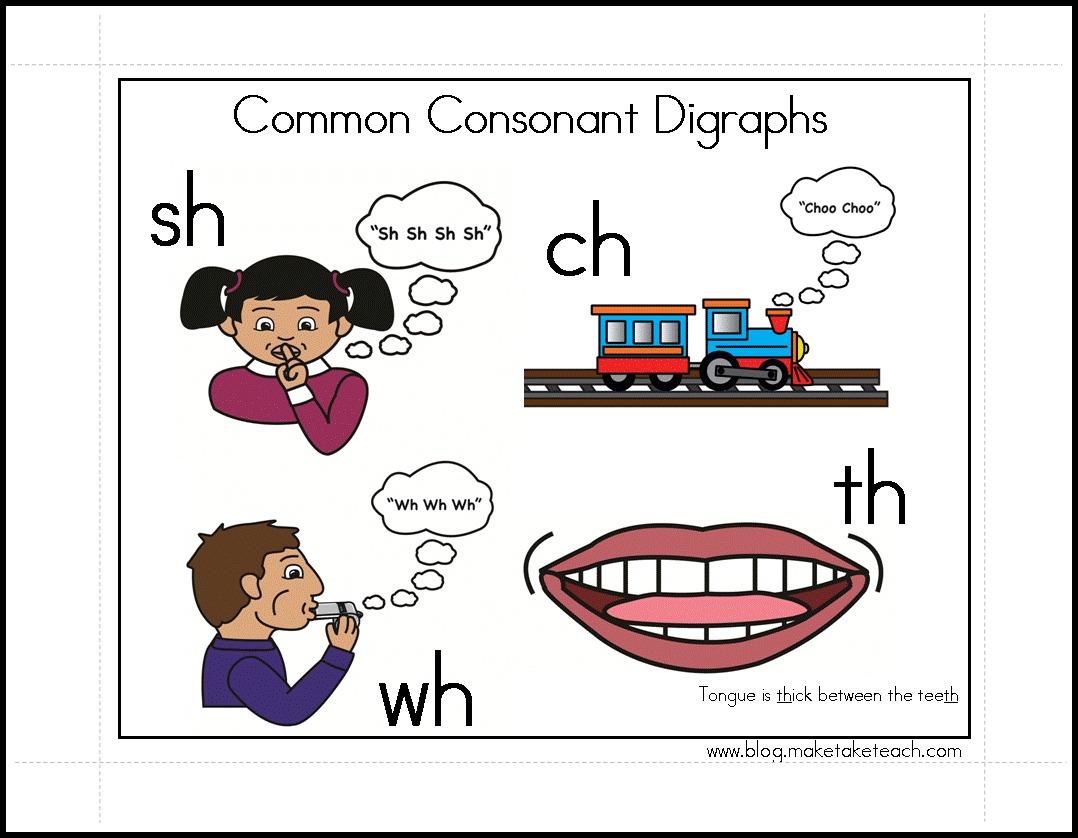
Resources for Teaching Blends and Digraphs Make Take & Teach
This digraphs and blends chart is a great resource for students to tuck into their writing folder or keep in their book box. I included two versions: one in color… And one in ink saving black and white. Grab Your Download Ready to start tackling blends and digraphs too?!

beginning blends and digraphs...good to put in writing folder
Blends, Digraphs, and Trigraphs: Word Lists, Examples, and Explanations. Blends are when two or three letters come together and mix their sounds so that gently flow from one consonant sound to the next. An example of a blend is the word "black" where you quickly need to transition from the "b" to the "l" sound quickly.

Blends and Digraphs Activities Conversations in Literacy
In a blend, each letter retains its individual sound (this is important!). For example, in the word brag, you can still hear the individual /b/ and /r/ sounds in the "br" blend. This is different from a digraph. A digraph is a two-letter combination that represents a single sound (phoneme).